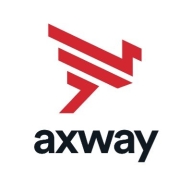

Find out what your peers are saying about Microsoft, Informatica, Talend and others in Data Integration.
| Product | Market Share (%) |
|---|---|
| Axway AMPLIFY Application Integration | 0.6% |
| Informatica PowerCenter | 6.0% |
| SSIS | 5.7% |
| Other | 87.7% |
| Product | Market Share (%) |
|---|---|
| IBM B2B Integrator | 7.0% |
| IBM Sterling B2B Integration Services | 15.1% |
| webMethods.io | 11.9% |
| Other | 66.0% |


| Company Size | Count |
|---|---|
| Small Business | 9 |
| Midsize Enterprise | 8 |
| Large Enterprise | 32 |
Axway Integrator unites multiple incompatible systems, data formats and protocols to centralize and optimize all transactions with suppliers, customers, and other trading partners. IT organizations can use it to design, execute, and monitor integration processes that include transformation of content; protocol mediation and support for files of any size, message type, or flavor of API; and compliance with industry- and company-specific regulations and requirements.
IBM B2B Integrator helps you securely integrate complex B2B processes with your partner communities. It provides a single, flexible B2B gateway that enables your organization to meet a wide range of B2B integration needs. The solution can improve business processes beyond enterprise boundaries and increase visibility into and across supply and demand chains.
We monitor all Data Integration reviews to prevent fraudulent reviews and keep review quality high. We do not post reviews by company employees or direct competitors. We validate each review for authenticity via cross-reference with LinkedIn, and personal follow-up with the reviewer when necessary.